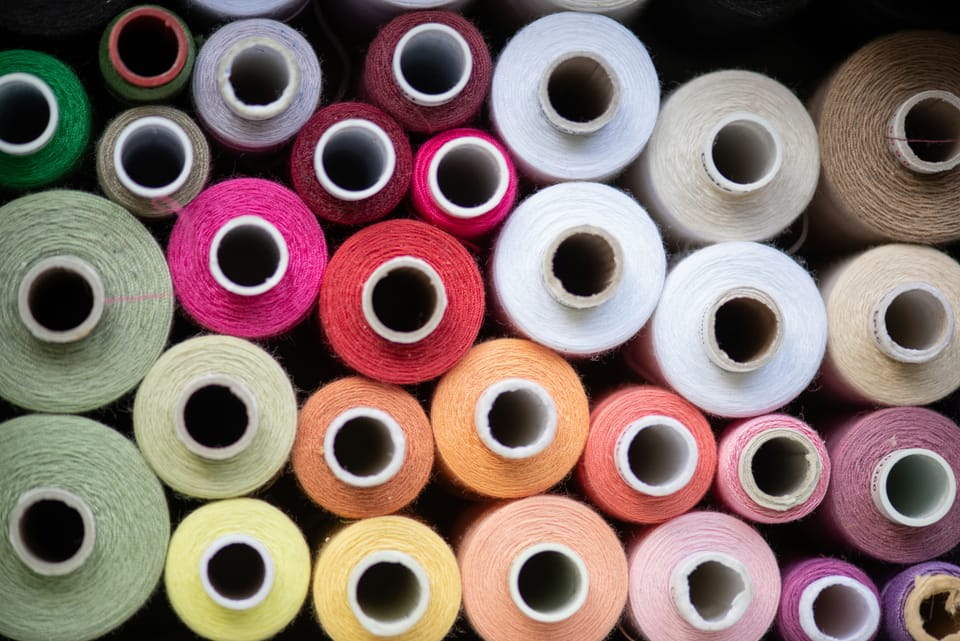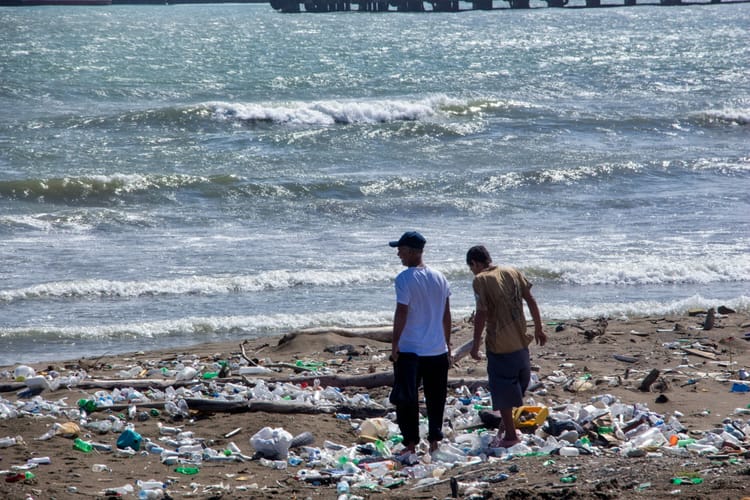From big promises to disillusion: Taking stock of fashion’s sustainable transformation

Speaking at the World Retail Congress last week, former H&M CEO Helena Helmersson captured a sentiment shared by many sustainability professionals across sectors: “We have moved from a phase where the sustainability space was filled with big promises and green visions for the future, and now, with unpredictable events happening continuously, we're experiencing disillusion.”
This disillusion is being felt across the global economy, but perhaps even more strongly in consumer-facing industries like fashion.
“Fashion is one of the more active industries in terms of seeking to take action on its impact. There is therefore a lot of attention given to it: it's brands that you recognise, that you engage with on a regular basis. Is not one step removed. And so there's a bit more of a perceived pressure coming from consumers,” explains Andrew Garraway, Climate Policy Lead at Risilience.
In this sector, big promises and disillusions are equally scrutinised: H&M can be hailed for its progress around sustainable materials and called out for its links to Brazilian deforestation in the same breath.
This visibility is helping to move things in the right direction, particularly when it comes to materials. FTSE 250 firm Coats, which makes thread and footwear components used in more than one in five pieces of apparel sold worldwide, saw revenue from 100% recycled thread products rise by 144% to US$405 million last year, suggesting a real shift in brands’ procurement preferences.
But it’s fair to say that fashion’s sustainable transition remains painfully slow. While 91% of brands and 63% of producers have set sustainable materials targets for 2030, less than 1% of fibres used in apparel manufacturing in 2023 came from post-industrial and post-use recycled textiles. Meanwhile, the production of virgin fossil-based synthetic fibres rose from 67 million metric tonnes in 2022 to 75 million metric tonnes in 2023, according to the Global Fashion Agenda’s (GFA) 2024 Monitor.
Fast fashion’s unsustainable business model
It doesn’t take much to understand why the amount of virgin fossil-based fibers produced worldwide is on the rise despite recycled and sustainable materials gaining traction: the business model of fashion is still based on producing more clothes than the world needs.
Case in point: H&M sourced nearly 90% sustainable materials and used 96% renewable electricity to process them – yet its Scope 3 emissions rose by 3.5% due to an increase in garment manufacturing.
GFA notes that textile production has almost doubled over the past 20 years, and that in the UK alone, 23 million garments end up in landfills or incinerated each year, contributing 750,000 tonnes of carbon emissions.
Circular business models are on the rise, spurred by regulation like the EU’s Waste Framework Directive and Circular Textile Strategy and California’s Responsible Textile Recovery Act, but for the most part, these models sorely lack scale.
At the same time, ultra-fast fashion brand Shein is capturing more and more market share despite known environmental and ethical controversies.
“It's a challenge when we see the sort of the stated preference of consumers is very strongly ‘we want sustainable products’. But then when it does come down to that economic argument, people typically go with the option that's the lowest cost,” Garraway tells CSO Futures.
In the face of this contradiction, fashion brands will have to “put on their big girl pants”, to reuse an expression first coined by former Decathlon CSO Anna Turrell.
“Top management's job is to design a system to help the organisation succeed with both [sustainability and profitability]. Make it simple for the many and complex for the few,” suggests Helmersson.
Climate risk as the catalyst
In other words, it’s up to fashion companies to completely overhaul their business models to achieve sustainable and circular production without expecting anything in return from consumers – a difficult pill to swallow.
But for Garraway, there is one key, fast-growing argument for this transformation: climate risk.
“The stick is, if we don't change, we fundamentally don't have a business model that will work in the next 20 to 30 years, or even closer. So shining a spotlight on the real, present-term risks from physical climate change is actually really transformative for companies,” he says.
Rising global temperatures and changing weather patterns are already affecting yields for crops like cotton and flax, while extreme heat and flooding risk robbing vital apparel production hubs like Bangladesh, Cambodia, Pakistan and Vietnam of US$65 billion in export earnings and 1 million potential jobs by 2030.
And yet, in a recent survey by McKinsey and Business of Fashion, only 18% of fashion executives said they see sustainability as a top-three risk for growth in 2025 – down from 29% for 2024.
“With the exception of a handful of brands, the industry has yet to unlock a marketable, at-scale value proposition for sustainable fashion,” McKinsey concluded.
Carrot and stick… But mostly stick
Garraway acknowledges that fashion is one of the most collaborative sectors when it comes to tackling sustainability challenges (the Ellen MacArthur Foundation’s Fashion ReModel initiative to work together on implementing circular business practices now has 10 major brands as members).
But he adds that in the ‘carrot and stick’ approach to sustainable change management, “unfortunately, what often works the best is the stick”.
For him, upcoming regulations forcing the sector to reduce emissions and waste are likely to be the most transformative pieces of the puzzle.
“There's a lot to be said for sort of industry-led initiatives, and probably over time, that's the most economically efficient way to address this problem, but when we're looking at the real- time challenge that we have to reduce emissions, to reduce waste, to try and get back within planetary boundaries, I think it has to come down to regulation of the industry,” he says.
The EU’s Corporate Sustainability Due Diligence Directive (CSDDD) is often seen as the regulation with the most potential to transform the sector, by making companies legally liable for environmental and human rights abuses within their supply chains – but its future is now uncertain.
Still, “it's an inevitability that the sector is going to be regulated, and the more aware actors within the industry know that, and they engage in the development of regulation,” Garraway adds.
One example of action driven by regulation is a pilot run by Inditex, Mango, H&M and Primark in Spain to improve post-consumer textile waste recovery by installing collection points in a variety of locations – launched in preparation for mandatory extended producer responsibility (EPR) within the EU’s Waste Framework Directive.
At Risilience, Garraway concludes: “[Regulations] are absolutely essential to drive not only a reduction in waste, but also to create a market for circularity. If you're going to have all these materials as a company, you're going to need to create a market to reuse those. And if that second-hand market has the effect it should have, that would reduce the primary clothing market and companies will have to transform.”







Member discussion